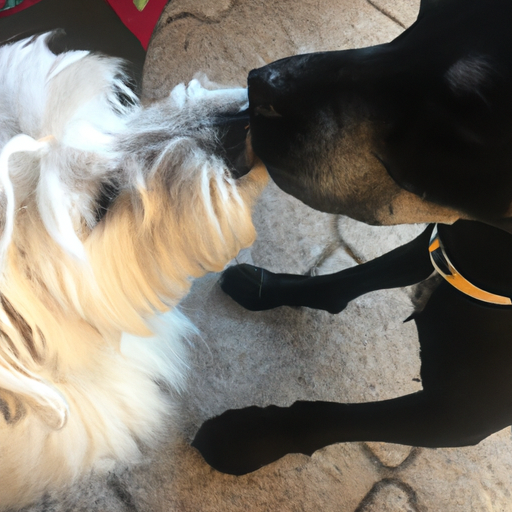As a dog lover, you’ve likely noticed how your furry friends interact with each other. From playful wrestling to quiet moments of companionship, dogs have a unique way of expressing their affection for each other. Understanding these behaviors can help you better care for your pets and ensure they’re living their happiest, healthiest lives. Let’s delve into the world of canine affection.
Table of Contents
- Dogs’ Social Behavior
- Understanding Dog Play
- Tail Wagging: More Than Just a Happy Sign
- Body Language of Affection
- How Dogs Use Scent to Show Affection
- Vocal Communication
- Coping with Aggression
- Frequently Asked Questions
Key Takeaways
- Dogs use a variety of behaviors to express affection, including play, body language, scent, and vocal communication.
- Understanding these behaviors can help pet owners ensure their dogs are happy and healthy.
- While play and body language are often easy to interpret, scent and vocal communication can be more complex.
- Aggression can sometimes be mistaken for affection, so it’s important to understand the difference.
Dogs’ Social Behavior
Understanding canine affection starts with an understanding of dogs’ social behavior. Dogs are pack animals, a term you’ve likely heard on One Top Dog. Their wild ancestors lived in groups, and many of their social behaviors are still present in our domestic dogs. These behaviors include specific ways of showing affection to each other.
Understanding Dog Play
One of the most obvious ways dogs show affection to each other is through play. This can include behaviors like wrestling, chasing, and play bowing. As PetMD explains, play is an essential part of dogs’ social lives and a key way they bond with each other.
Tail Wagging: More Than Just a Happy Sign
Most people know that a wagging tail often means a happy dog. But did you know that tail wagging can also be a sign of affection between dogs? According to One Top Dog, the speed and direction of the wag can communicate different messages, including affection.
Body Language of Affection
Dogs use a variety of body language signals to show affection to each other. These can include behaviors like leaning on each other, licking each other’s faces, and resting their heads on each other. If you notice these behaviors in your dogs, it’s a good sign that they’re feeling affectionate towards each other.
How Dogs Use Scent to Show Affection
Scent is an important part of canine communication. Dogs use scent to mark their territory, identify each other, and even show affection. According to One Top Dog, sniffing each other can be a way for dogs to greet each other and show affection.
Vocal Communication
Dogs also use vocal communication to show affection. This can include behaviors like whimpering, barking, and howling. While some of these sounds might seem strange to us, they’re an important part of how dogs communicate with each other.
Coping with Aggression
Sometimes, what appears to be aggression can actually be a form of play. But it’s important to know the difference, as true aggression can be dangerous. If you’re unsure about your dogs’ behavior, it’s always a good idea to consult with a professional, like a vet or a dog behaviorist.
Frequently Asked Questions
1. How can I tell if my dogs are playing or fighting?
Look for signs like play bows (where one dog lowers its front end while keeping its rear end up), taking turns chasing each other, and breaking off the play to rest. If you’re still unsure, it’s best to consult with a professional.
2. My dogs sniff each other a lot. Is this normal?
Yes, sniffing is a normal part of canine communication. It can be a way for dogs to greet each other and show affection.
3. What should I do if my dogs are showing signs of aggression to each other?
If your dogs are showing signs of aggression, it’s important to consult with a professional. They can help you understand the cause of the aggression and develop a plan to address it.
In conclusion, understanding how dogs show affection to each other will not only deepen your relationship with your pets but also help you ensure they are thriving in your care. Keep observing, keep learning, and keep enjoying the rich world of canine communication.



